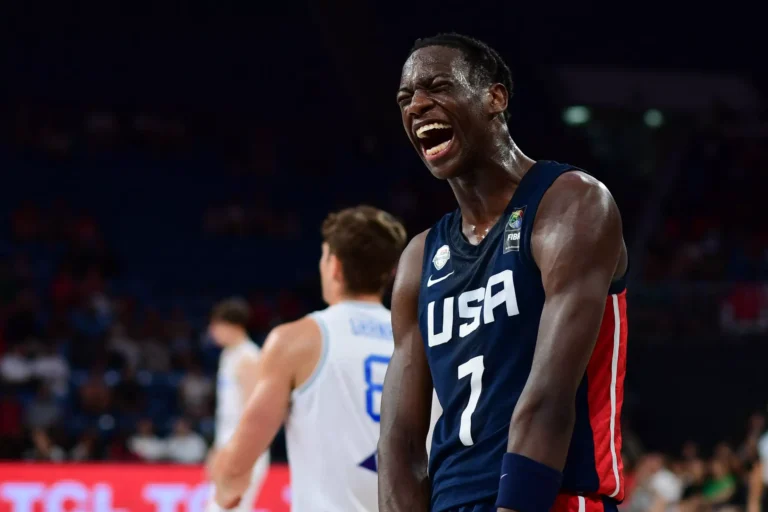On November 13, college athletes nationwide can sign binding financial aid agreements with their chosen universities, marking a significant milestone in their sports careers. Although the NCAA has phased out the National Letter of Intent program, Signing Day remains a momentous occasion, traditionally celebrated across campuses. Yet, this year, the day brings uncertainty for many prospective athletes, particularly those in Olympic sports, who face unexpected roster cuts and rescinded scholarships.
Numerous schools, especially those in power conferences, have slashed roster spots and even canceled scholarships once guaranteed to prospective athletes. The cuts stem from a new NCAA policy implemented after a landmark settlement of the antitrust lawsuit, House v. NCAA, which challenged the organization’s long-standing limitations on athlete compensation. In response, the NCAA and power conferences introduced expanded scholarship options alongside roster limits, sparking widespread frustration among affected athletes and their families.
The new policy aims to broaden scholarship opportunities through direct revenue-sharing while also establishing roster limits that previously did not exist for many sports. For athletes relying on partial scholarships or walk-on spots, the impact is severe. Power conference schools alone are expected to cut approximately 3,000 roster positions as resources are reallocated toward revenue-generating sports like football and men’s basketball, with additional considerations for federal Title IX compliance, requiring equitable treatment of male and female athletes.
Over 20,000 parents and athletes have joined a Facebook group dedicated to opposing the new policy, and several families are now working with the national law firm MoloLamken to challenge the settlement. Attorney Tom Wiegand, representing many affected families, argues that the roster limits impose “significant flaws” on the settlement, calling for judicial amendments to make the policy more equitable for all athletes involved.
Parents of affected athletes, some of whom have spoken anonymously, express dismay at seeing their children’s long-term aspirations jeopardized. Stories vary widely: one beach volleyball recruit who had committed months ago was informed that her roster spot had been eliminated, while a sophomore cross-country runner in the SEC was notified via email of her dismissal from the team just two days into the semester. In one case, an SEC program released all its men’s swimming commitments for 2025, with some track and field programs seeing similar mass cuts.
Estimates suggest more than 1,500 walk-on football players, representing 20-30 players per team, could lose their roster spots. While many Olympic sports have long relied on walk-ons to fill rosters, the new limits impose strict caps on team sizes. For instance, cross-country rosters, which commonly support 30+ athletes, are now restricted to just 17 spots. Men’s volleyball, similarly, faces a reduction, allowing only 18 athletes per team.
This historic settlement introduces a three-part framework: (1) nearly $2.8 billion in backpay distributed over a decade to former athletes, (2) revenue-sharing provisions enabling schools to share up to $23 million annually with current athletes, and (3) the new roster structure. Lead attorney Steve Berman, a plaintiff’s representative, acknowledges that the settlement benefits some athletes but has placed others, promised spots, in a difficult situation. Berman is negotiating a “grandfathering” provision that would protect current athletes from losing their roster spots abruptly, while school administrators hastily comply with roster changes.
Samantha Barany, the executive director of the College Swimming and Diving Coaches Association of America, indicates that universities are re-evaluating athletes even before the new policy’s formal implementation in July. Athletic departments at many institutions are rebalancing their resources, shifting funding from non-revenue to revenue-generating sports like football, partly to meet Title IX mandates for equitable opportunities in male and female athletics.
Before this policy, many NCAA sports featured scholarship limits but did not enforce strict roster caps. The latest guidelines allow schools to offer scholarships to entire rosters but require capping roster sizes, effectively eliminating many walk-on roles and jeopardizing partial scholarships. The impact varies: a sport like men’s volleyball previously allocated only 4.5 scholarships but often allowed up to 25 athletes, according to university discretion. While the policy could lead to more full scholarships, it limits overall team sizes, reducing opportunities for those reliant on walk-on spots.
Athlete advocates argue the settlement’s benefits, while needed, are disproportionately allocated to a subset of athletes at the expense of others. Jaime Gordon, executive director of the American Volleyball Coaches Association, echoes this sentiment, noting that while athletes receiving increased support benefit, a large number of other athletes, particularly in non-revenue sports, face vulnerability and uncertainty.
The roster limitations and revenue-sharing framework also have implications for Title IX compliance. Schools looking to expand football and baseball rosters must ensure corresponding increases in scholarships for female athletes. Administrators have hinted that men’s Olympic sports may see their scholarships repurposed to meet Title IX standards, prioritizing equity without additional funding. Football’s roster will rise to 105 players with expanded scholarships, while baseball’s scholarship limit of 11.7 will accommodate a 34-player roster.
College administrators, including SEC Commissioner Greg Sankey, describe this as a “messy” period in college sports. Wisconsin athletic director Chris McIntosh has indicated plans to reduce the university’s athlete population by up to 100, while Ohio State’s athletic director Ross Bjork estimates a reduction of 150 positions within one of the nation’s largest athletic departments.
This policy shift also affects the U.S. Olympic movement, which relies heavily on collegiate athletes. Olympic sports, which are often subsidized by football revenues, face heightened vulnerability. Some athlete advocates argue that university administrators have directed excessive resources toward high-profile sports at the expense of Olympic sports, a dynamic potentially reshaping the traditional U.S. Olympic pipeline.
With the college sports landscape shifting dramatically, Berman remains optimistic that the settlement will proceed, but concerns from athletes, parents, and coaches continue to mount. For some, walk-on positions provided not just access to team environments but critical financial support. However, the additional costs of travel, meals, and other expenses for walk-ons have made them increasingly unsustainable for universities.






